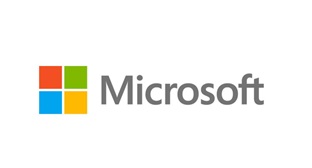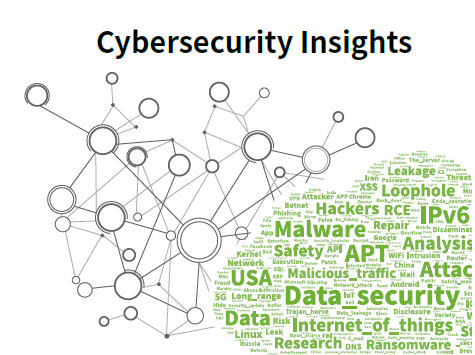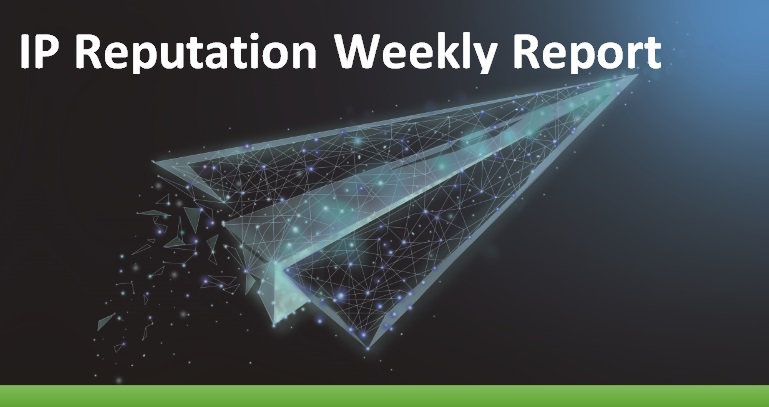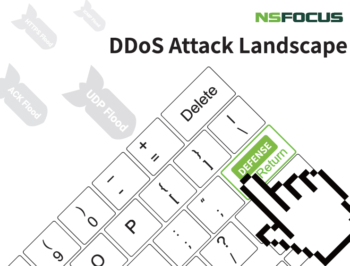A Newcomer in Anti-DDoS Solutions: BGP FlowSpec

June 16, 2020
With the robust development of the Internet, more and more companies have put their services online. While the Internet conveniences people’s lives, how to secure it becomes an increasingly severe challenge. Distributed denial-of-service (DDoS) is one of the most common types of cyberattacks. It paralyzes the target network, disrupts services, and causes direct financial damages by exhausting the egress bandwidth and degrading server performance. NSFOCUS’s anti-DDoS solution has been widely adopted by telecom carriers, financial companies, Internet service providers (ISPs), and small and medium-sized businesses (SMBs), which, in turn, makes it possible for the company to gain an insight in customer requirements, thoroughly understand various business scenarios, and keep innovating. In August 2017, NSFOCUS introduced an innovative concept of integrating BGP FlowSpec into ADS, injecting new life into DDoS protection.
(more…)Windows SMBv3 Remote Code Execution Vulnerability (CVE-2020-0796) Technical Analysis and Solution

June 15, 2020
Overview
On March 11, Beijing time, Microsoft released March 2020 updates to fix vulnerabilities among which is a remote code execution vulnerability in Microsoft Server Message Block 3.1.1 (SMBv3) indicated in a security bulletin released earlier. This vulnerability exists in the way the Microsoft SMBv3 protocol handles certain requests. An attacker could exploit this vulnerability in an unauthenticated way.
For the SMBv3 server, attackers could send a crafted packet to the server to trigger this vulnerability; for the SMBv3 client, attackers could trigger the vulnerability by tricking the user into connecting to a maliciously crafted SMB server.
(more…)Information Security in the Workplace- Use of Mobile Storage-v

June 12, 2020
With the advancement of IT-based transformation and the rapid development of IT, various network technologies have seen more extensive and profound applications, along with which come a multitude of cyber security issues. Come to find out what information security issues you should beware of in the workplace.
(more…)Cybersecurity Insights -1

June 11, 2020
Executive Summary
2019 witnessed more intense challenges in global political and economic orders. Restricted by various conventions, agreements, and protocols, traditional military means are now the last resort. In this context, attacks on the financial sector and on the cyberspace become the first choices for rival countries to try on their modern military strategies. Predictably, these attacks will probably become regular approaches in the future. By the time when the 2018 Cybersecurity Insights was released, the following trends had taken shape regarding cybersecurity: The window between the discovery of a vulnerability and the effective exploitation of this vulnerability was shortened; the DDoS attack size steadily grew; emerging threats like those from the Internet of Things (IoT) rose sharply; such malware as backdoors, cryptojackers, worms, trojans, and botnets were still active. When it comes to information disclosure, the AcFun website was hacked, leading to a leak of nearly 10 million pieces of user data; India’s Aadhaar (India’s national ID database) number leak affected 1.1 billion citizens. Information disclosure events have hit record highs for six years in a row since 2013. The four enterprises, namely Facebook, Equifax, British Airways, and Marriott International, together were fined approximately USD 9 billion for privacy and information leaks, more than the aggregate market value of the cybersecurity industry in China in that year.
(more…)IP Reputation Report-06072020

June 10, 2020
1.Top 10 countries in attack counts: The above diagram shows the top 10 regions with the most malicious IP addresses from the NSFOCUS IP Reputation databases at June 7, 2020. 2.Top 10 countries in attack percentage: The Belarus is in first place. The Cape Verde is in the second place. The country China (CN) is […]
Apache Kylin Remote Code Execution Vulnerability (CVE-2020-1956) Threat Alert

June 9, 2020
Vulnerability Description Recently, Apache released a security advisory to announce the fix of a remote code execution vulnerability (CVE-2020-1956) in Apache Kylin. Apache Kylin has some RESTful APIs that will associate OS commands with user-typed strings. As Apache Kylin fails to properly verify user inputs, an attacker could execute arbitrary system commands without authorization. Currently, […]
Fastjson 1.2.68 and Earlier Remote Code Execution Vulnerability Threat Alert

June 8, 2020
Vulnerability Description
On May 28, Fastjson 1.2.68 and before were reported to contain a remote code execution vulnerability that bypasses the autoType switch to implement deserialization of classes that contain security risks. Attackers could exploit this vulnerability to execute arbitrary code on the target machine.
(more…)Apache Tomcat Session Deserialization Code Execution Vulnerability (CVE-2020-9484) Threat Alert

June 5, 2020
Overview Recently, Apache Tomcat released a security advisory, announcing the fix of a remote code execution vulnerability (CVE-2020-9484) due to persistent session. An attacker can exploit this vulnerability only when the following conditions are met: The attacker can take control of the contents and name of a file on the server. The server is configured […]
IP Reputation Report-05312020

June 4, 2020
1. Top 10 countries in attack counts: The above diagram shows the top 10 regions with the most malicious IP addresses from the NSFOCUS IP Reputation databases at May 31, 2020. 2. Top 10 countries in attack percentage: The Belarus is in first place. The Cape Verde is in the second place. The country China […]
DDoS Attack Landscape 10

June 3, 2020
Active Families
- Gafgyt
As one of the largest IoT DDoS families, Gafgyt compromises such devices as routers and cameras by means of password cracking and exploits to receive C&C commands and launch DDoS attacks.
In 2019, the Gafgyt family continued to be active, mainly targeting North America, Europe, and Australia. The number of Gafgyt-based malware increased fourfold compared with 2018 and the
average daily increase of C&C attacks reached 34.5%. Compared with 2018, the number of DDoS attack directives increased by 175%, most of which were UDP flood attacks targeting ports 80 and
443 for HTTP services and ports 3074, 300000, 30100, and 32000 for gaming services.
